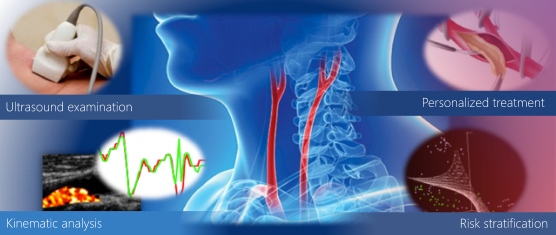Gastounioti, S. Makrodimitris, S. Golemati, N. P. E. Kadoglou, C. D. Liapis, and K. S. Nikita

In this paper, we address valid risk stratification for carotid atherosclerosis, which is a crucial public health challenge with major effects for both patient safety and state economies. The unexplored potential of kinematic features in assisting the diagnostic decision for carotid atherosclerosis was investigated within the framework of a computer-aided-diagnosis (CAD) tool. To this end, 15 CAD schemes were designed and were fed with a wide variety of kinematic features of the atherosclerotic plaque and the arterial wall adjacent to the plaque for patients from two different hospitals. The designed CAD schemes were systematically optimized in terms of their design parameters and they were benchmarked in terms of their ability to discriminate between symptomatic and asymptomatic cases. The combination of the Fisher discriminant ratio, as a feature-selection strategy, and support vector machines, in the classification module, was revealed as the optimal motion-based CAD tool. The particular CAD tool was evaluated with several cross-validation strategies and yielded higher than 88% classification accuracy; the texture-based CAD performance in the same dataset was 80%. The results showed that the incorporation of kinematic features of the arterial wall in CAD may have a particularly favorable impact on the performance of image-data-driven diagnosis for carotid atherosclerosis.

